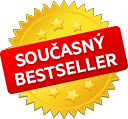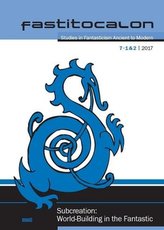Childhood, Food and Fantasy
10
%
1062 Kč 1 175 Kč
Sleva až 70% u třetiny knih
Contents
1. Introduction 1
2. Childhood 8
2.1 Changes in childhood and childhood concepts 8
2.2 The emergence of an attractive children's culture of its own 12
2.2.1 Toys, games and pastimes 12
2.2.2 Books, magazines and comics 17
2.2.3 Clothes and fashion 19
2.2.4 A holiday and leisure time culture 22
2.2.5 The nursery 35
2.3 British upper- and upper-middle-class lifestyles 37
2.3.1 Edwardian housing and its consequences 37
2.3.2 Special servant-children relationships 44
2.3.3 Different concepts of parent-child interaction 50
3. Food: reasons for its importance in Victorian, Edwardian
and inter-war fantasy 52
3.1 Food as a social marker 53
3.2 Changes in food production, storage and preparation 57
3.3 Eating socialization in Victorian and Edwardian times 61
3.3.1 Strict mealtimes 61
3.3.2 Children's consumer status and the training of rigid table manners 63
3.3.3 Psychological effects of the pressure centering around meals 68
3.4 Changes in food culture and eating socialization 72
3.4.1 Today's food culture 72
3.4.2 Today's eating socialization 74
3.5 The interaction of history/reality and literature 76
4. Fantasy: fairy tale, fantasy and child readers 79
4.1 Different types of fantasy and diverse modes of experience 88
4.2 Further attempts to (re-)define fantasy: the emergence of fantasy
within children's literature 94
5. It's always tea-time: food as a cultural metaphor in Lewis Carroll's
Alice's Adventures in Wonderland and Through the Looking-Glass
124
5.1 Food functions 129
5.1.1 The interconnectedness of realistic and fantastic uses of food 129
5.1.2 Reversed logic 133
5.1.3 Food absurdities as nonsense 134
5..4 Poetry 156
5.1.5 Nonsense poems and songs 161
5.1.6 Dream, reality and fantasy 172
5.1.7 Time, chronology, logic and memory 178
5.2 Conclusion 182
6. I want my tea, We must have dinner, anyway:
food as a cultural metaphor in Edith Nesbit's Five Children and It 187
6.1 Realism and fantasy, metafiction, adult and child readers, credibility
and suspense of disbelief 188
6.2 Food functions 201
6.2.1 The interconnectedness of realistic and fantastic uses of food 201
6.2.2 Meals interspersed with adventures or adventures interspersed with meals 213
6.2.3 Meals as dramaturgy: the pressure of mealtimes 219
6.2.4 Moral/spiritual encouragement, sensuous enjoyment and
moral/legal considerations 222
6.3 Conclusion 227
7. Eat and drink in style and enjoy it: food as a cultural metaphor
in Kenneth Grahame's The Wind in the Willows 229
7.1 Food functions 241
7.1.1 Identity and lifestyle 241
7.1.2 Eating and drinking as an integral part of action and characterization 253
7.1.3 Atmosphere, sensuousness, domestic comfort, personal well-being
and security 269
7.1.4 Moral/spiritual encouragement and affirmation of one's lifestyle
through physical nourishment 274
7.1.5 The role and functions of poetry and songs 280
7.2 Conclusion 287
8. To eat or to be eaten: food as a cultural metaphor
in J.R.R. Tolkien's The Hobbit or There and Back Again 289
8.1 Food functions 293
8.1.1 Identity and lifestyle 293
8.1.2 Eating and drinking as an integral part of action and characterization 305
8.1.3 Food and meals as chronotopes 319
8.1.4 Physical nourishment and moral/spiritual encouragement
as the foundation of stability, security and peace 328
8.1.5 To eat or to be eaten: the eating hierarchy 332
8.1.6 Stories, tales, poems, songs and music 367
8.2 Conclusion 374
9. General conclusion: childhood, food and fantasy 379
Bibliography 383
| Autor: | Binder, Christiane Maria |
| Nakladatel: | WVT Wissenschaftlicher Verlag Trier |
| Rok vydání: | 2018 |
| Jazyk : | Angličtina |
| Vazba: | Paperback / softback |
| Počet stran: | 400 |
Mohlo by se vám také líbit..






